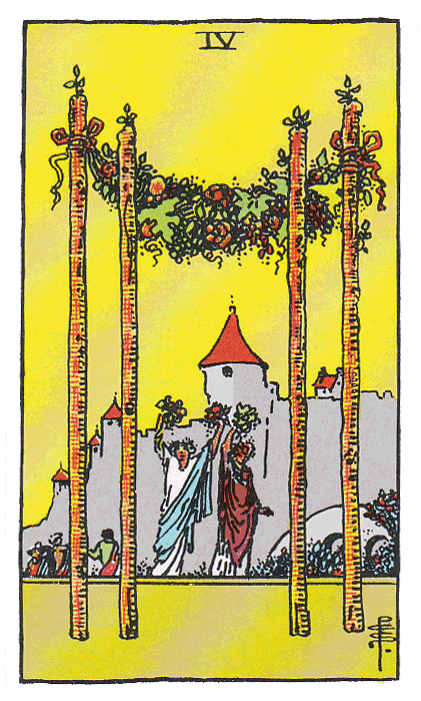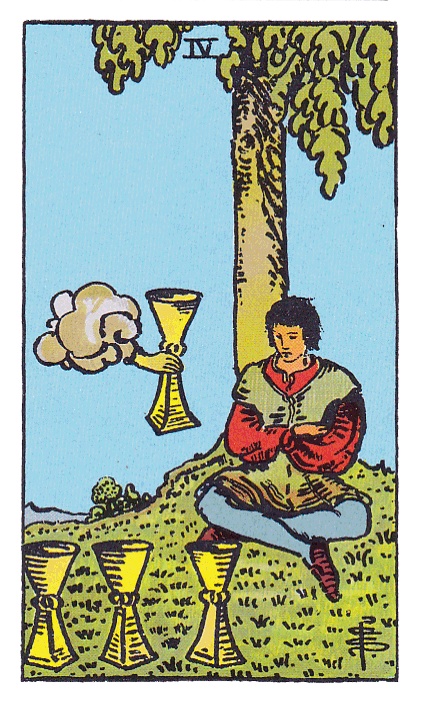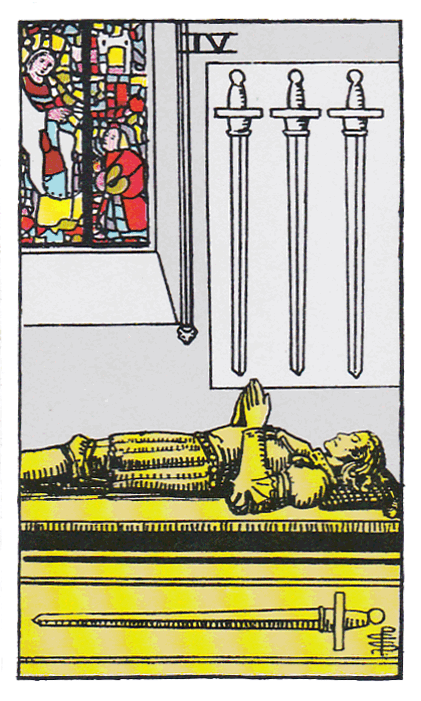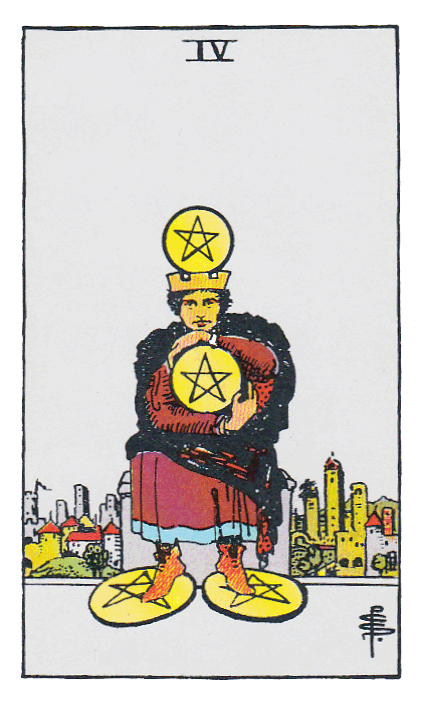|
======================================================================
Description:
Chesed, also called Gedulah, is the First Sephirah to appear below the Abyss. It represents the first manifestation of the World of Yetzirah. Chesed is (More to follow)...
(Updated 13 November 2020)
======================================================================
Gedulah
By Doreen Sturzaker (2008)
When we reach the two Sephiroth, Gedulah and Geburah in our discussions we find the energies pouring out from the Archetypal World of Kether are becoming more dense.
Gedulah may be considered as Chokmah on a lower arc and Geburah is Binah on a lower arc. Between the World of Briah, i.e. Chokmah and Binah there is a gulf in consciousness known as the Abyss. Below the Abyss there is a change in the nature of being, from potential it becomes actual, this is as our finite minds understand it. As we move down the Tree we get nearer to our everyday consciousness and the Tree therefore becomes more understandable perhaps, although we are still speaking of a high level of consciousness, we may sometimes touch the Sphere of Gedulah in our meditation but we cannot hold it permanently whilst we are in a physical body.
These two Sephiroth really have to be taken together because one balances the other and we cannot look at one without considering its opposite on the Tree. Life is a continual building up and breaking down process, anabolic and katabolic and Gedulah and Geburah represent these two processes in the macrocosm. We may gain a clearer idea of these two in their magical images. Gedulah is a crowned and mighty king seated on his throne, while Geburah is a mighty warrior king in his chariot. So we have the concept of a stable kingdom at peace, law-abiding and a kingdom and king going forth to war.
Gedulah on the positive Pillar is an out-pouring of energy which must have the balancing force of Geburah to restrict and limit its exuberance, the exuberance of its Mundane Chakra Jupiter, jolly Jupiter, which must at times be kept in due bounds. We only find real prosperity and happiness, that is, spiritual wealth and joy as a result of right action and integrity. This, of course, is all about balance and we only attain to this by the use of Geburic restriction and limitation. The prodigal out-pouring of Gedulah must be passed on to those who are lacking, materially speaking, and so Jupiter becomes truly a benefic influence and not a mere squanderer of goodies.
From Chokmah and Binah above flow wisdom and understanding and as this spills over into Gedulah it becomes mercy and compassion. We have to learn to develop these qualities as we do with the qualities of all the Spheres as we proceed on our long journey through life. Keywords for this Sphere are beneficence, kindness, compassion, obedience and organisation. This is the Sephirah of organisation, resources both material and spiritual have to be brought together for the good of the whole and this applies whether we are talking about an individual or the greater individual, the nation. Again, the Magical Image is helpful here, the mighty throned king with his orb and sceptre ruling over his people as a kindly father, the protector and preserver of the people. All flows in a well-run orderly manner, stable and with merciful laws formulated for the good of those subject to them and those subject to Gedulah's laws need to learn to realise that we have to give up most of our selfish desires and some of our independence for the good of the community generally. We all know that if we all did exactly as we pleased there would soon be chaos and no organised society could exist, so Gedulah does demand that we give up some things for the greater good. If we have not managed to do so on our journey down the Tree and it is rather unlikely because every Sephiroth and Path has its negative as well as its positive side, and we have to experience both to become perfected beings, then Geburah steps in to adjust the balance. On the return journey up the Tree back to the source we shall not get past Geburah until we have settled all our debts and are ready to pass into the Sphere of Gedulah and so prepare to cross the Abyss.
Gedulah is a Sphere of abstract ideas. When we have some new idea forming in our mind we are operating in this Sphere. For instance Stephenson when he conceived the idea of an engine was operating in the Sphere of Gedulah. The thought came down through the planes; imagination went to work in Netzach the mental concept grew in Hod until it finally appeared in the physical world of Malkuth as a solid, material engine.
I did mention earlier that each Sephirah has its positive and negative side. The negative qualities we usually refer to as the vices of a Sephirah and in the case of Gedulah these are bigotry, hypocrisy, gluttony and tyranny. They are self-explanatory - bigotry is an unwillingness to see or appreciate a point of view other than one's own. Hypocrisy, we all know what this particular negative quality is, it is perhaps a holding back of a part of oneself while pretending to enter fully into whatever it is we are involved in. Gluttony, well of course, this is helping ourselves to more than our fair share of the common store, a form of selfishness really. So even at the level of Gedulah there are still these vices to overcome. Tyranny is the wrong use of authority and how often we see this in the world today. The higher we proceed up the Tree then the more subtle the vices become, when weno longer have the problem of negativity based on the emotions then we have those that are mentally based and these are more subtle to deal withand much more difficult to eradicate.
Gedulah is the Sphere of the Masters, that is, their own true Sphere is Gedulah on the Tree in Gedulah, for there is a Tree in every Sphere and although maybe they seem perfect by our standards they are never-the-less evolving beings, just as we are. In Gedulah, up-building, constructive and organising the Masters who are disincarnate beings have as a part of their work the production of images in their consciousness which are obtained telepathically from the archetypal images found in Kether, contacted during meditation and transmitted down the planes where they can be contacted in the Sphere of Hod, which is considered to be the point of contact between the Masters and humanity. But an individual who can rise to the Sephirah of Gedulah in meditation could meet the Masters on a telepathic level, mind to mind and receive their spiritual influences without any form involved and none of the illusion which may be encountered on an astral or Yesodic plane. The Archangel here is Tzadkiel meaning "Rightness of God". He might perhaps be said to be the sense of rightness within us, the inner feeling of how we should behave in order to make progress up the Tree. He and the Archangel Khamael on the opposite Pillar in the Sephirah Geburah are the Guardians of the Pillars. Tzadkiel communicates to us what we should be doing because it is right and Khamael tells us what to avoid because it is wrong for our progress, spiritually speaking.
The various colours attributed to the Sephiroth in each of the Four Worlds tell us something of the Sephirah, the qualities of the colour help us to understand better the qualities we should be developing to gain mastery over or initiation into a Sphere.
In the physical world of Assiah the colours of Gedulah are a Deep Azure Blue flecked with Yellow plus the Ray of its Mundane Chakra the Amethyst of Jupiter and so we have the qualities of gentleness and patience with the Yellow of creative activity turned by the helpful Amethyst into spiritual creativity.
In the world of Yetzirah, the Formative World, we have a Deep Purple. Now in this tone we have pride, greatness, pomposity and these have to be turned away from egocentric emotions into a more spiritual emotion where the ideals of service to humanity become more predominant – more in keeping with the wise ruler, the servant of his people.
In Briah the colour is Blue, the Ray of love and wisdom, at this stage of the Tree it is a selfless love, universal in its application.
In the Atziluthic World the colour is Violet where the individual is helped to develop a spiritual humility, quiet strength and true compassion.
======================================================================
The Magical Image of Gedulah
By Richard Stewart (1983)
The magical image of Gedulah is a crowned, enthroned King, a symbol which adequately depicts the status of Gedulah as it stands in the order of creation as the crown of the microcosm or manifest universe.
The idea of kingship has long been looked upon as the highest form of government, the King being the mouthpiece of the God or Gods, whose task was to emulate the Kingdom of Heaven on earth.
Perhaps the finest example of the Gedulah kingship is the life and reign of Numa Pompilius - a Sabine, reputedly born on 21st April, the day Rome was founded by Romulus. Fromthe very first, Numa was possessed of every virtue and a pacifist, something which ran against the conquering warrior and predatory mores of his time. When Romulus died the Senate of Rome offered him the throne and thereafter followed the most peaceful and harmonious reign which lasted for 43 years that there had been before or for that matter since.
Numa loved the solitude of the countryside where he had contact with Eregia, one of the Muses and to whom he attributed all of his wisdom and virtues. As a philosopher he believed that the greatest victory was the conquest of man's own passions and that neither threats nor compulsion were necessary in dealing with humanity for if their ruler’s life was blameless and an example to all mankind, they would of their own free will seek his wisdom and way of life.
He began by reforming the religion of the people, turning them to agriculture, arts and crafts, rather than military preoccupations and dreams of conquest.
He forbad the use of images in worship, since he believed the eternal, uncreated invisible god could only be appreciated by the mind. He allowed no human or animal representation, as he believed that to liken the higher to the lower was impious.
He ordained all powerful priests known as Pontifices and he as Pontifex Maximus taught the people, directed the sacred rites and acted as prophet of the divine will. He built a temple to the goddess Vesta and established six vestal virgins to maintain the holy fire.
Equally, his social reforms were wise. At his coronation there was enmity between the Romans and Sabines and so he established a class system that the people would be ranked according to their trades or arts. This system resulted in the peaceful co-existence of what had been implacable enemies.
Believing in the respect of the boundaries of land, he built two temples to Faith and Terminus which taught the people respect of each other's goods and property. He gave land to the poor so that crime due to unemployment would diminish, and believed that agricultural pursuits bred a desire for peace.
He established peace guardians with the power of veto against king or warrior wishing to plunge the city into war unless absolutely justifiable. They sought peace for home, for conference and negotiation.
He changed the calendar so that March would no longer be the start of the year being associated with war. He introduced January, dedicated to Janus who was to raise human life out of its savage and bestial state; and February, a month of purification, into the calendar - bringing with them a twelve month year.
The gates of the Temple of Janus, open in times of war were permanently shut during Numa's reign.
After having reigned for 43 years, Numa died at the age of 83. He was buried along with a further coffin containing 24 holy books he had written during his lifetime, as he believed that the mysteries should not be perpetuated by lifeless books but by the memory, teachings and practices of his disciples.
Such a King and Philosopher as Numa is an excellent example of the magical image of Gedulah. A King who practiced what wisdom he preached. After his death the pendulum swung from the side of Gedulah to that of Geburah, and warrior ambitions rose once more to commence the foundation of the Roman Empire.
Numa's life showed great moral courage and fortitude, a quality linked with the kingly images of both Gedulah and Geburah, and also Tiphareth - the moral world and the higher mental body of the psyche of which he was so intimate.
The teachings of the magical image of Gedulah are that the King is within each of us and must be united with the Queen or Malkuth, that is brought into practice in active life. The Kingdom is within and without and changes without can only be exacted by making the contact within with the fountain of Eregia, the Wisdom of Gedulah.
Like many great men of the past, the power behind the throne was feminine. Eregia was the Muse of the black poplar, whose symbol is uprightness and is perhaps a reference to the feminine qualities of Gedulah expressing itself as the Wisdom of the King on the masculine pillar.
======================================================================
Gedulah through the Four Worlds
By D.M. Dalton (1979)
Gedulah is the highest Crown below the abyss. It is a sphere of an expansive nature, symbolized by the mundane chakra Jupiter.
From Jupiter the amethyst ray gives off its influence throughout the four worlds. The amethyst gives the qualities of humility, mysticism and spirituality.
In Atziluth these qualities are added to those of violet indicated by the brilliance of Kether. This gives to the perfected spark the qualities of compassion, magnanimity and spiritual humility.
In Briah the blue of Gedulah is overshadowed by the pure soft blue of Chokmah. This combination of blues gives to the spark the highest qualities of the blue Love/Wisdom ray. Spiritual love and wisdom are beyond the range of the personality. Gedulah through all the worlds has some of the lower qualities of wisdom as Gedulah is Chokmah on a lower level, reflected through Binah.
In Binah the blue of Gedulah becomes mixed with the Crimson Ray, which gives the spark the quality of humbleness. Gedulah is the Cohesive or Receptive Intelligence and here in Binah these qualities must come to the fore, as Binah is a sphere of absorption. Through this understanding comes tranquility, and a cohesion of all that has been accomplished.
In the Yetziratic world the deep purple of Gedulah is in turn modified by violet, orange, clear pink rose, amber, violet and indigo. The qualities of these rays mixed with the deep purple of Gedulah show the qualities that have to be developed in the Yetziratic world. These should manifest as righteous conduct throughout the six spheres of Yetzirah.
Firstly spiritual devotion should be developed in Yesod. This devotion is turned towards abstract ideas in Hod so as to break out of orthodox lines of thought. These abstract ideas give expansion of one's horizons beyond the Self in Netzach, eventually bringing one to the point of dedicating oneself to giving instead of receiving. In Tiphareth this giving of the Self comes through humility, this leads to the idea of self-control and orderly progress through Geburah.
When all these qualities are mastered, one learns the lessons of Gedulah in Gedulah, which is mastership. One now learns the rigours of rulership and becomes a true master, working for others rather than the self.
In Assiah the yellow of Malkuth reacts with the deep azure blue of Gedulah which is also flecked with yellow. The Yellow Ray of creative activity is an apt colour for Gedulah which is responsible for all creative work in the world.
Here one gets one's first vision of love and with the qualities of all the rays one can patiently work towards going beyond the limitations of the Assiatic world. This is nevertheless the world of action, the place where all the qualities of Gedulah throughout the four worlds must eventually be brought to bear, so as to aid those sparks still left in Assiah.
======================================================================
Gedulah
By Frances Morris (1984)
Gedulah, Love, also called Chesed, Mercy is the first sphere on the path of the lightning flash below the abyss. In other words it is the first Sephirah of the worlds of form; the first appearance of the Ain Force in the actual world instead of the potential: it is 'doing’ as distinct from "being”, it is like the apprehension by the consciousness of an abstract idea which is subsequently brought down the planes to become a physical fact in Malkuth.
The Ain, pure spirit, could not express itself in dense matter in one movement, hence the ten Sephiroth of the Tree of Life. But it was merciful before it became necessary for it to be severe, and therefore Gedulah was created before Geburah. On the upward journey this is reversed. We, as sparks of the Ain, returning from the material to the spiritual have to pass through the tests and trials of divine justice, Geburah, before we can receive the love and mercy of Gedulah.
Since Gedulah is the sphere of mercy and compassion, and that given in a virile and forceful manner, Gedulah being Chokmah on a lower level, the unrestrained outgoing active energy, it has Jupiter assigned to it as its astrological significator. Jupiter has always been regarded as the great benefic who gives all benefits unrestrainedly to his children but we must have control to be able to cope with this abundance. The magical image of Gedulah is a crowned king on his throne, emphasising that aspect of benevolent rulership, for the ability to control power is necessary before that power is acquired. So again we see the necessity of learning the lesson of Geburah before that of Gedulah.
Those beings who operate from this sphere are the Masters; Masters since they have mastered the wheel of reincarnation and remain to help humanity only by their own free choice. They are beings who have learned the control and wielding of power and who now co-operate with the Ain in its creation.
They function in this sphere as pure consciousness to pass down to the planes of form the archetypal ideas of the Ain. The point of contact between mankind and the Masters is in Hod, sphere of ceremonial magic. (Hod is said to have no root by which it can cleave except in Gedulah.) Hod is a sphere of mind and contact with the Masters must be made on a mental plane, for Gedulah is the sphere where forms are only of the density of the processes of the abstract mind or intuition.
Gedulah is the sphere of rulership, as already mentioned, but this must not be thought of in an oppressive or compelling sense since the will of the Ain is love and it is by its will the Ain rules} the spiritual experience of Gedulah is spoken of as 'a vision of love’. At this level of the Tree the will of the individual is in accord with the Divine Will and is therefore also love. Hence we may understand Crowley's maxim: 'Do what thou wilt shall be the whole of the Law’, which does not mean 'do as you like', but is explained by the second part, often forgotten: 'Love is the Law. Love under Will'. The virtue of Gedulah is said to be obedience since by following one's own true will, one is also obeying the will of the Ain.
Of course, since power incorrectly wielded corrupts, it is equally easy to understand the vices of this sphere: hypocrisy, bigotry, tyranny and gluttony.
The angels of a sphere are units of energy commanding the elementals, and obeying the archangels. Their work is in the formative world of each sphere to manipulate manifestations just behind the range of physical matter.
The angels of Gedulah are the Chasmalim, or Shining Ones. They are the flames of fusion which weld creation together. The Seraphim, the fiery angels of Geburah separate us from our enemies, but the Chasmalim weld us to our friends. They are the heartwarming blaze of an open fire or the light of torches or candles carried in procession. It is in our inner selves the Chasmalim kindle these flames and thus link us to each other in the joy that should proceed from life itself. They teach us how to laugh for joy like a child looking at its birthday cake candles, which laughter is a true communication between humanity and the creator.
The Godaspect of Gedulah is Al, or El, which means simply 'The God’ or 'Divine One', in another version it is written Bel, or Baal. In ancient times each tribe had its Bel, or chief, who protected and nurtured his people. Hence with the emergence of the god-king cult it was the divine Bel or El who gave the good things of life to the tribe via his earthly representative. Beltane is the pagan festival of this early god conceit, the festival of El the divine giver.
======================================================================
The Psychological Aspects of Gedulah
By D.M. Dalton (1980)
The magical image of Gedulah is a mighty crowned and enthroned King. The magical weapons which this King holds are: the wand of power gained in Geburah, the sceptre of office which has now to be taken up, and the crook, the symbol of rulership, the guiding principle which has to be learned in Gedulah.
The word Gedulah in Hebrew means Great or Growth. The alternative word, Chesed, tells us in what areas this growth is necessary, as it means grace, favour, righteousness and charity, all attributes of compassion.
The word Chesed can also mean to shame, to reproach or disgrace, and this ties in nicely with the symbolism of the crook as a symbol of rulership, the shepherd being the one who guides his flock - but it also shows the hypocrisy of most rulers. These things show the masculine and feminine sides of this Sephirah, the expansive masculine greatness symbolized by Jupiter, the mundane chakra, and the feminine love and mercy side.
The aim of this sphere is to balance the masculine power aspect of Geburah with its feminine counterpart, the love and mercy of Gedulah. This having been achieved, a state of Daath would result, symbolized by the sceptre of office.
It appears difficult to discuss this Sephirah without always considering Geburah as well. As this is an essentially feminine Sephirah on the masculine pillar, there is the possibility of the love/mercy becoming unbalanced into selfish desire. It always has to be weighed against the justice and power of Geburah.
As Gedulah is the highest crown below the abyss, it must in some way reflect the Collective Unconscious, or at least make it easier for the Collective Unconscious to manifest in the individuality.
The constant need to balance the anima and animus is perhaps why this sphere is called the measuring and receptacular intelligence.
Anima dominant males and females run the risk of having their love and mercy decline into emotional love and sentimentality on reaching this Sephirah. Animus dominant males and females could also have their love descend to that of sentimentality, but on the surface it would appear as if they had the harder task of the two types.
======================================================================
To be continued...
|












